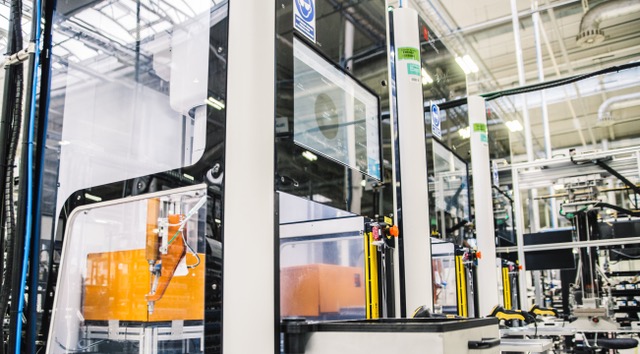The Best Way to Make a Global Impact: Localization

By Lior Katz, VP of Global Field Operations, Bright Machines
 If you’ve ever traveled internationally, you might recall the experience of stumbling upon the familiar sight of Apple store and the sudden wave of comfort you feel in a foreign place. This is because Apple – like many international brands – has long pursued a standardized model for growing revenue, which translates to a standardized experience for you. In this model, the entirety of the buying experience, from the product to the storefront, looks and feels exactly the same to the consumer whether they’re standing in San Francisco or Shanghai. It also usually means a globalized supply chain. While consistency of this nature breeds predictability and therefore consumer trust, the problem is that consumers today are evolving in both demographic and taste, and therefore demanding more unique buying experiences. Moreover, chains once heralded for their consistency, are experiencing added pressure from microbrands that are better poised to fulfill consumer thirst for niche and customized products.
If you’ve ever traveled internationally, you might recall the experience of stumbling upon the familiar sight of Apple store and the sudden wave of comfort you feel in a foreign place. This is because Apple – like many international brands – has long pursued a standardized model for growing revenue, which translates to a standardized experience for you. In this model, the entirety of the buying experience, from the product to the storefront, looks and feels exactly the same to the consumer whether they’re standing in San Francisco or Shanghai. It also usually means a globalized supply chain. While consistency of this nature breeds predictability and therefore consumer trust, the problem is that consumers today are evolving in both demographic and taste, and therefore demanding more unique buying experiences. Moreover, chains once heralded for their consistency, are experiencing added pressure from microbrands that are better poised to fulfill consumer thirst for niche and customized products.
As a result, large companies are increasingly seeking out opportunities to create products that appeal to local populations. Take Domino’s Pizza, for example. At their locations in India, roughly 50 percent of the menu offerings are tailored to local tastes (like Paneer Makhani Pizza). Travelers to Japan may notice they can easily find KitKat bars in Matcha Green Tea Flavor – an offering that might sound rather strange to a Western palette. Making your consumer offerings regional often requires going local with supply chain as well – and that’s a good thing.
As a global operations leader, I’ve seen companies spanning industries and geographies look at ways to develop tighter relationships with their supply chain in order to be closer to their markets and develop products with specific regional appeal. While catering to local tastes is a driving force behind this effort, companies are also tightening their supply chains in order to achieve very real business benefits which far outweigh the potential challenges in going local.
Long Versus Localized Supply Chains
Companies that engage in “long” supply chains associated with standardization typically offshore manufacturing to emerging economies like China as a cost savings tactic, as labor in these areas is significantly cheaper. Apple, for example, is famous for designing its technology products in California while leveraging the lower cost of offshoring manufacturing to China. Working with global vendors also ensures consistency in offerings, and therefore confidence in the process. But in most cases, long supply chains result in higher wait times for imported parts and slower production and ship times, increased shipment costs, inventory cost burdens, and a delayed response to market fluctuations – all of which can result in unsold inventory or lack of it.
Localization, on the other hand, not only enables an original buying experience for the consumer, but it empowers organizations to reduce costs and delivery lead time, sense threats, and react swiftly and flexibly to market forces.
The electronics industry is no exception to the benefits of localization. Take for example Chinese smartphone startup Xiaomi. When the phone’s release in India was announced in 2015, the company received far more pre-orders than they were equipped to serve in the country. To scale up production, the company moved its manufacturing facility closer to Indian customers by opening up an e-commerce distribution center in Bangalore. As a result, Xiaomi met demand in India while also gaining prominent brand recognition compared to other smartphone makers in the country.
According to Deloitte research “Consumer product trends – Navigating 2020,” consumers are expecting more variety, and are increasingly willing to pay more for customized products.
● Competitors are emerging with new business models that embrace product customization.
● Companies are seeking more vertical integration, including locking in local supply sources within countries and regions.
● Manufacturing environment is likely to be changed from Long runs of limited SKU assortment to flexible short runs with greater variety/customization.
● Advances in manufacturing technologies (such as flexible & advanced automated manufacturing) are enabling customization at lower costs.
For these reasons, companies around the world – from the electronics industry, to food services and beyond – are rethinking their long supply chain models and embracing a more open-minded approach to working with local vendors to bring production closer to their markets.
Today, localization is imperative for companies looking to gain a competitive advantage and make a global impact. The market – with changing consumer tastes and mounting pressure from small and medium-sized businesses – demands it. But true and effective localization requires much more than introducing a new color to a smartphone or tablet – it requires a completely re-engineered supply chain in which the various building blocks of a product happen much closer to home. After all, the most efficient supply chains in the world are useless if they can’t react quickly to local market demands. It’s time for companies around the world to take a hard look at their supply chain strategies and embrace a more localized, flexible approach to manufacturing – before it’s too late.













